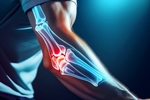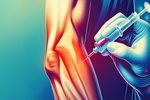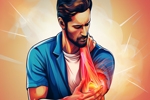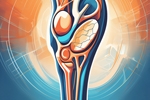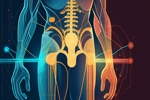Home »
Blog » Pain Management
| Stem Cell, PRP, Acupuncture in Queens & Long Island, New York
Pain Management | Stem Cell, PRP, Acupuncture in Queens & Long Island, New York
Tennis elbow and golfer’s elbow are overuse injuries that cause pain and inflammation in the tendons around the elbow. This guide explores their causes, symptoms, treatment options, and how to get back to your sport without permanent damage.
Read more
Cortisone injections offer fast-acting relief for elbow pain caused by conditions like tennis or golfer’s elbow. By reducing inflammation directly at the source, they can improve mobility and restore function. Learn how these injections work, when they're recommended, and how they compare to other interventional treatments like PRP and ultrasound-guided therapies.
Read more
Elbow pain can be caused by a variety of factors, including overuse, injury, and medical conditions like tennis elbow and golfer's elbow. Whether from repetitive motions, sports activities, or underlying conditions, understanding the root cause is key to effective treatment. Learn about common causes, symptoms, and how interventional pain management techniques like PRP therapy and stem cell injections can help relieve pain and restore elbow function.
Read more
Hip osteoarthritis is a degenerative joint condition that causes hip pain, stiffness, and reduced mobility. Learn about symptoms, causes, and the latest interventional treatments that can help you manage hip OA and avoid surgery.
Read more
Staying active with hip pain can be challenging, but the right exercises and lifestyle changes can help you maintain mobility and reduce discomfort. Low-impact activities like swimming and walking, along with targeted strengthening and flexibility exercises, can support your joints and alleviate pain. Learn how to manage your hip pain while keeping up with the activities you love.
Read more
EMG and NCV nerve studies are diagnostic tests used to determine the underlying causes of hip pain, particularly when nerve damage or muscle dysfunction is suspected. These tests help pinpoint whether nerve compression, muscle weakness, or joint issues are contributing to your discomfort, enabling targeted treatments for pain relief.
Read more
Hip pain can significantly impact daily life, making movement difficult and reducing overall quality of life. Whether caused by arthritis, bursitis, fractures, or muscle strains, identifying the root cause is key to effective treatment. At Precision Pain Care and Rehabilitation, we offer cutting-edge interventional treatments such as nerve blocks, PRP therapy, and spinal cord stimulation to alleviate pain and restore mobility. Learn more about the causes, symptoms, and best treatment options to manage hip pain effectively.
Read more
Preventing shoulder pain while working out is essential for maintaining long-term fitness and joint health. Proper warm-ups, strength training, and mobility exercises can help protect the shoulders from injury. Focusing on good posture, using correct weightlifting form, and incorporating recovery strategies are key to avoiding overuse issues. Whether you're an athlete or a casual gym-goer, understanding injury prevention techniques can enhance performance and keep your workouts pain-free. Learn the best strategies to strengthen and protect your shoulders for a safer and more effective fitness routine.
Read more
Struggling with persistent shoulder pain? PRP therapy offers a cutting-edge, non-surgical solution that harnesses the body’s natural healing abilities. By injecting concentrated platelets into the affected area, PRP stimulates tissue repair, reduces inflammation, and enhances joint function. Ideal for conditions like rotator cuff injuries, tendonitis, and osteoarthritis, PRP therapy is a safe and effective alternative to surgery. Learn how this innovative treatment can help you regain mobility and live pain-free.
Read more
Rotator cuff tendinitis is a common cause of shoulder pain, often resulting from repetitive overhead motions, aging, or sports injuries. This condition involves inflammation of the tendons, leading to discomfort, weakness, and limited mobility. Early intervention with physical therapy, pain management techniques, and lifestyle adjustments can help prevent further damage. In severe cases, treatments like corticosteroid injections, PRP therapy, or surgical repair may be necessary. Understanding the causes, symptoms, and available treatments can help individuals manage pain effectively and restore shoulder function.
Read more
Love this Post? Spread the World





